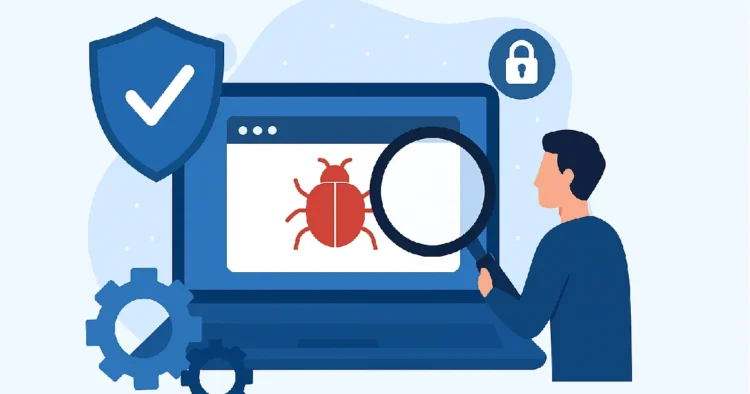Is your website secure? Do you want to know all the loopholes present in your website that can cause you harm? Web application penetration tests are here for you. Web application penetration testing is the practice of simulating attacks on a system in an attempt to gain access to sensitive data, with the purpose of determining whether a system is secure. These attacks are performed either internally or externally on a system, and they help provide information about the target system, identify vulnerabilities within it, and uncover exploits that could actually compromise the system. It is an essential health check of a system that informs testers whether remediation and security measures are needed.
Why Web Application Penetration Testing is needed for Both B2B and B2C Businesses
No matter if you are running a B2B or a B2C business, one thing that is the same is that your website is your primary interface between you and your audience. You will face risk and consequences if you do not secure your website.
B2B businesses often deal with sensitive data like client contracts, billing details, internal dashboards, or APIs that integrate with client systems. And that’s why B2B business websites are the main target of hackers, and you need to pay extra attention to your safety from cybersecurity threats. No matter how credible and trustworthy your company is, one breach can destroy years of credibility and partnerships.
B2C business runs on user trust, seamless experience, and brand reputation.
Even a small breach can cause you a heavy loss. Web apps have personal details, payment info, and purchase history, and a single exposed database can result in mass identity theft and financial losses. And the worst part is it’s not a short-term loss because an attack directly impacts sales. And in the market, if trust is lost, it’s nearly impossible to rebuild. Pen testing helps you stay ahead of that damage.
For B2B, penetration testing protects contracts, compliance, and partnerships.
For B2C, it protects customers, brand reputation, and revenue.
Ways to Plan, Run, and Report a Penetration Test

In this techy world, we have hundreds of options to apply this test, but if you want results and a trusted partner, you have to choose the right one according to your needs and goals. So let’s talk about some methodologies that can help you.
1. White-box testing
In white-box testing, you have to give the tester full access to source code, architecture diagrams, credentials, CI/CD pipelines, and internal network maps. So they can find deep logic bugs, insecure coding patterns, and misconfigurations faster and with accuracy. It’s cost-effective for code review and targeted exploit proof-of-concepts. You can go with this option if you are in the developing stage.
2. Black-box testing
In Black-box testing, the tester acts like an outsider with no internal info, only public URLs, domains, and what can be discovered from the internet. The best thing about a black box is that you don’t have to share your secrets.
3. Gray-box testing
In Gray-box testing, the tester gets partial knowledge, like valid user credentials or limited architecture docs, but not full source code. You can go with this testing if you want to simulate an authenticated attacker (insider or stolen creds) without exposing source code.
But you don’t have to choose one because you can do all along for a better outcome. Regular black/gray-box for external posture and auth abuse is important. But you should go with white-box testing code as the next step for code quality and hidden logic flaws.
Steps for getting a web application penetration test

1. Decide the objective:
Decide why you need to run this test. You have to be specific about your domain, APIs, and specific pages. And the important part is that you must have a signed authorization and NDA before testing starts.
2. Prepare:
Generally, our systems look hectic and messy, but before running the test, tell your people and prepare systems so the test doesn’t cause chaos. If you are having a grey test, be aware that you are not giving full accountability to the tester. And don’t forget to take backups or snapshots of critical systems.
3. The Test
Run the test after good and full preparation. Tester looks for weak spots (automated scans and manual checks). If they find something risky, they prove it with safe examples (PoC). The tester will simply check the recon, which means what’s public about your website. He will scan because automated tools find obvious bugs. Then comes the manual testing, like humans checking logic, auth, IDOR, XSS, SQLi, and API issues. Don’t forget to collect screenshots, request/response snippets, and exact steps to reproduce.
4. Report & Fix
After successful testing, the tester gives a clear report. Your team fixes the biggest problems first. Ask for a good report that should be short; language should be easy to understand adn should include a summary. And if they find out about any bug, it should be clearly documented about what it is, how to reproduce it, PoC, and the exact fix recommendation.
5. Re-test and learn
Once the tester is done with his job, the tester again checks the fixes. Then you make sure the same mistake won’t happen again. So before closing the deal, request a retest for every fixed item and conduct a short workshop where the tester explains PoCs and fixes to your devs. And at the end, add security checks to your release process (SAST in CI, DAST, or a checklist). This step is very important because if you skip the retest, the vulnerability may still be there. If you skip learning, you’ll repeat the same mistakes.
Conclusion
The world is so fast, and technology is evolving at the speed of light. Which have bith pros and cons. The hackers are fast and knowledgeable, so in this era, ignoring web application security is like leaving your office door open overnight. Regular testing can save you from a big loss.
In tech cities like Bangalore, it’s become more important that if you’re working with a web app development company in Bangalore, you make sure they include security testing as part of every project. The best firms offering application development in Bangalore don’t just build high-performing apps, they build them to withstand real-world cyber threats. Investing in penetration testing today means saving your reputation, customers, and business tomorrow.

















